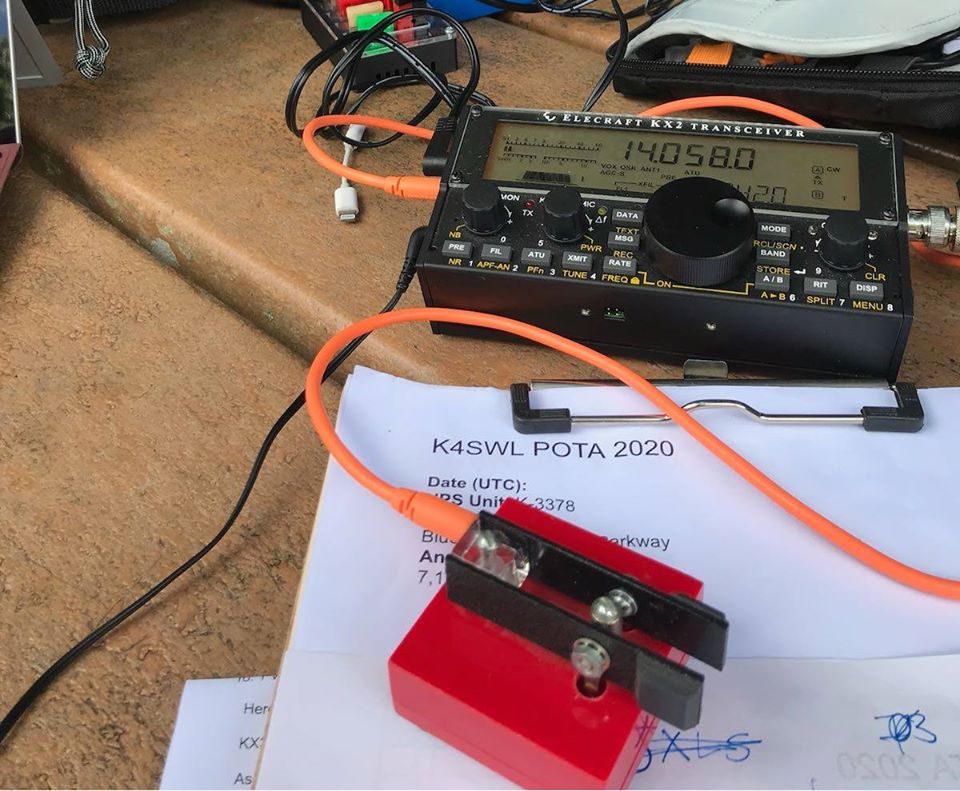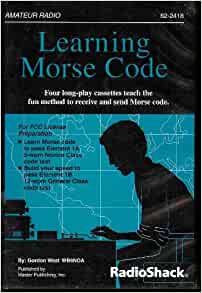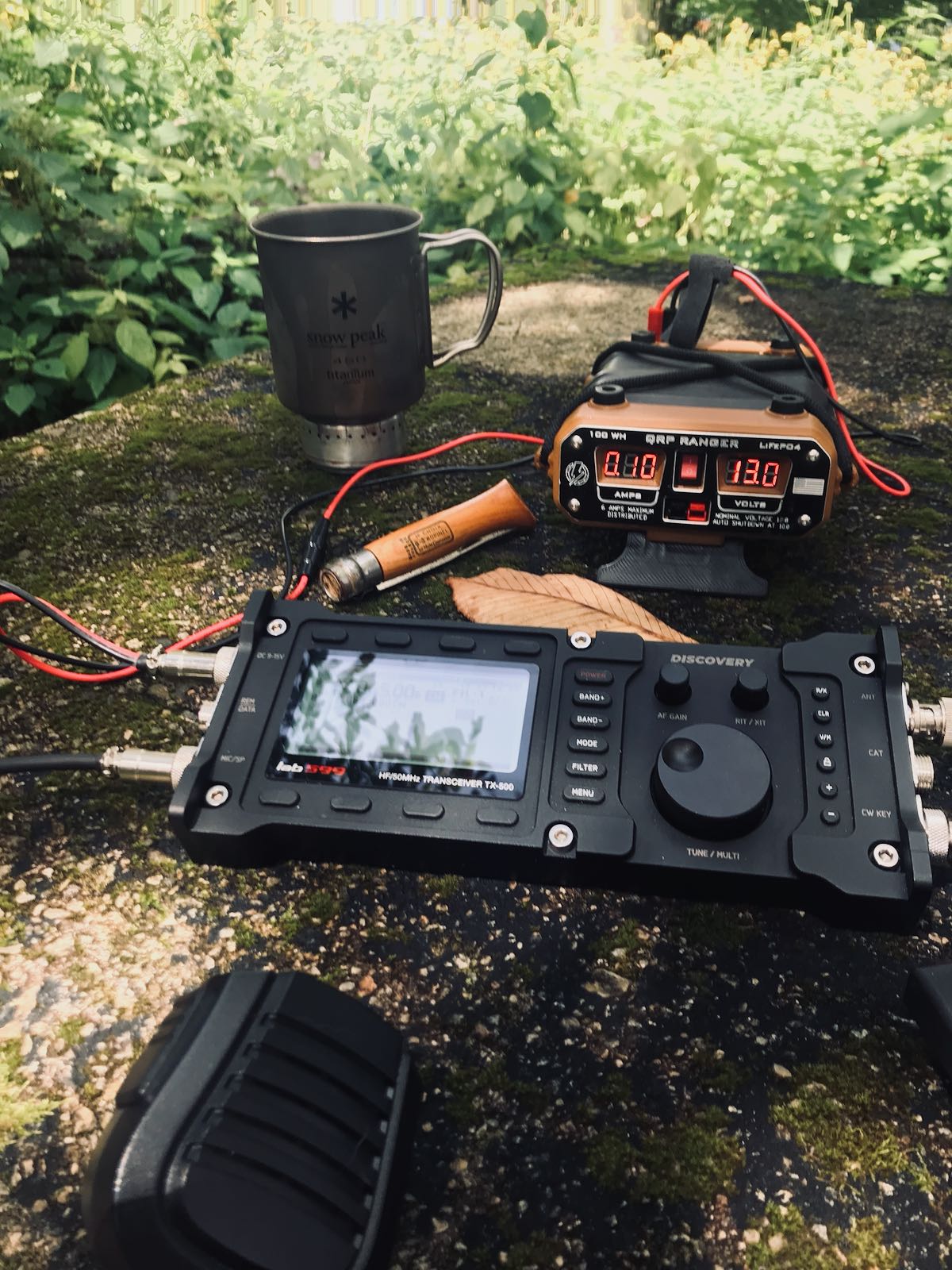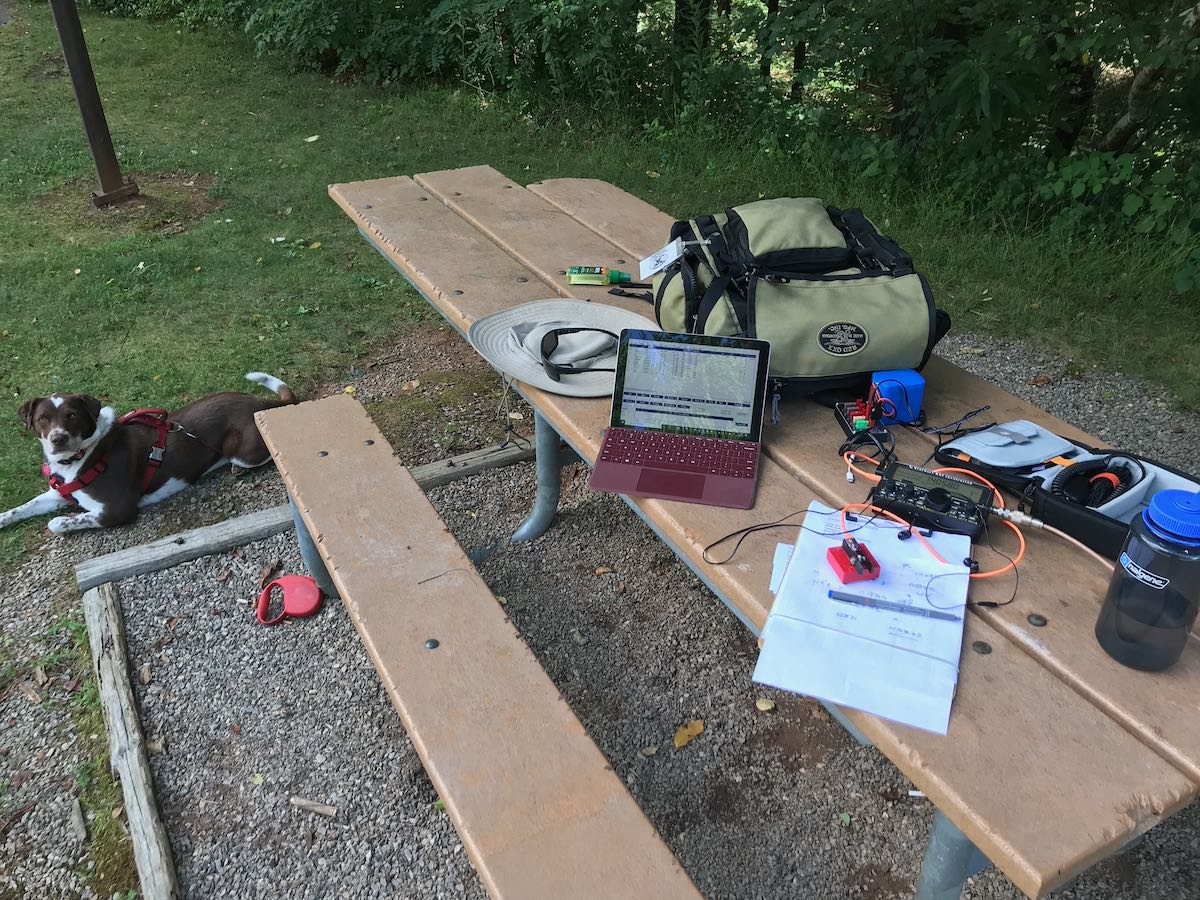One of the most common questions I receive on my YouTube Channel is on the topic of how I learned CW and started doing CW field activations.
I’ve often told new hams or those who want to learn CW that there is no “one path” to learning CW. Mine was certainly not a straight path, and I believe very few are.
I will state up-front that there are a number of resources out there for learning CW, including apps, programs, audio recordings, and clubs.
One resource with a loyal following is the Long Island CW Club. I’ve heard so many rave about their program, it’s certainly worth exploring.
My Path to CW
 I first learned about amateur radio in high school from a Curtis Mathis TV repairman house call. As he diagnosed an issue with our living room television, I held the flashlight and probably asked dozens of questions about the components inside. He eventually looked at me and said, “Have you ever heard about amateur radio?”
I first learned about amateur radio in high school from a Curtis Mathis TV repairman house call. As he diagnosed an issue with our living room television, I held the flashlight and probably asked dozens of questions about the components inside. He eventually looked at me and said, “Have you ever heard about amateur radio?”
After showing him the shortwave listening station I’d put together in my bedroom (all centered around a Zenith Transoceanic), he suggested I stop by a local RadioShack and pick up study material for the Novice license.
In 1988, the first steeping stone into amateur radio required learning enough CW/Morse Code to pass a simple five word per minute test along with a written exam.
 I eventually purchased Gordon West’s exam prep package which included the book and cassette tapes to help with my studies.
I eventually purchased Gordon West’s exam prep package which included the book and cassette tapes to help with my studies.
I was in high school at the time, though, and involved in a lot of extracurricular activities including my high school marching band, scouts, I volunteered at our local community theatre, was in a brass quintet, played bass in the high school jazz band, and I even played Tuba for our local college band. I had too much on my plate already. Then, I did my undergraduate studies including a year in France and put off my license even longer.
After graduating college/university in 1996, I worked briefly at a RadioShack and found the time to start studying again. Through the encouragement of my good friends and Elmers Mike (K8RAT) and Eric (WD8RIF), I studied the written material for my Novice and Technician exams, and also the cassette tapes for my 5 word per minute CW exam.
In early 1997, I took and passed all three components to snag my (then) “Technician Plus” license.
I planned to learn 13 words per minute to pass my General class license, but the FCC actually dropped the code requirement altogether. I passed my General in 1998 or 1999, and moved to Europe and the UK for a few years with my employer.
After moving back to the States, I tried to get back into CW, but again put it off thinking the learning curve would be too great.
Then in 2007, I had a break in employment and had free time at home. I pulled out those Gordon West tapes and worked through the entire course again.
The moment I could confidently copy all of the letters, all of the numbers, and a few abbreviations, I called my buddy Mike (K8RAT) and asked him to meet me on the air.
I was nervous, but I was communicating with a friend who was happy to slow down to 5 words per minute (not an easy task, mind you, when you’re used to 20WPM+!).
Mike and I had a daily morning QSO and that built my code speed up to 13-15 WPM in short order.
I learned that after your brain assimilates each Morse Code character, it’s then all about recognizing the sound of each character and abandoning any in-head translating of dits and dashes which slows you down. This is the ideal approach to any language: you need instant recognition to build speed. It’s not hard to do and, in fact, and our brains are wired to do this automatically.
After I started building confidence with code and doing 3 way 13 WPM ragchews with Mike and Eric on 80 meters, I started another huge project: building a house.
The house build took the better part of three years and it absorbed all of my time (that and my wife and I also had toddlers at home!).
We eventually moved into our house and I set up a permanent shack. I would occasionally hop on the CW bands, but usually just to test CW performance for transceiver and receiver reviews. In other words, I let my CW skills slip again.
Parks On The Air
 It wasn’t until last year (2020) during the pandemic that I decided to build my CW skills to a point that I could complete a Parks On The Air (POTA) CW activation.
It wasn’t until last year (2020) during the pandemic that I decided to build my CW skills to a point that I could complete a Parks On The Air (POTA) CW activation.
What was the motivation?
1.) POTA and SOTA activators who schedule their activations can be automatically spotted via the Reverse Beacon Network (RBN). This means if you’re at a site that has no mobile phone coverage, the system may automatically spot and re-spot you from your CW CQ calls. Since 60% of the sites I activate have no mobile phone or Internet coverage, this was a HUGE motivating factor.
2.) Let’s face it: CW is the ultimate mode for the portable operator. CW is simply more efficient and effective with your power output than voice modes like SSB, AM, or FM. Unlike modern digital modes, which are also more efficient than voice modes (think FT8/FT4), you need no special equipment or a computer as an interface.
3.) CW is a skill and, frankly, I wanted to improve that skill. I knew CW activations would be a wonderful motivator and excuse to practice.
Morse Runner
In May 2020, I started using a free program called Morse Runner to prepare for CW activation and potential pileups. Click here to read about my experience with Morse Runner.
Hunting
I also started hunting CW activators in the POTA program from home. The exchange is pretty simple, so it was easy to do. This also gave me the opportunity to learn common exchange communications and abbreviations.
Contests and DX
I started working DX stations in CW. As I mentioned in a previous post, the exchanges are very formulaic.
I also made a point of working CW stations in the 2020 ARRL Field Day and during the 2020 13 Colonies event.
My first CW activation

As I started to build a little confidence on the air–and before I had could talk myself out of it–on July 25, 2020, Hazel and I took my field radio kit to the Blue Ridge Parkway and I completed my first CW activation. Click here to read the details.
In short? It was actually a bit easier and more enjoyable than I had imagined.
Although I would get some butterflies at the start of the next few CW activations, CW quickly became my mode of choice. Why? For one thing, CW is a very narrow mode which means it’s super easy to find a clear frequency. CW also copes with QSB, QRN, and QRM much better than SSB. Frankly, there are also less LIDS on the CW bands.
There’s another reason that’s hard to explain, but I’ll try: when I operate in CW, I find that it takes my mind off of everything else going on in the world. When I’m listening to and sending code, it becomes my focus and somehow it’s very relaxing. I find it a bit of a refuge.
Finally, I have an appreciation of radio history and nostalgia so it’s fun to operate such a simple, early mode that’s still so incredibly effective.
What was your CW Path?
So there you go! CW is now my mode of choice. Even though I don’t even have one year of CW activations under my belt at time of posting, I operate it 95% of the time I’m in the field. I still love phone contacts–don’t get me wrong, I’m not a CW-only guy–but I prefer CW these days.
No comments:
Post a Comment